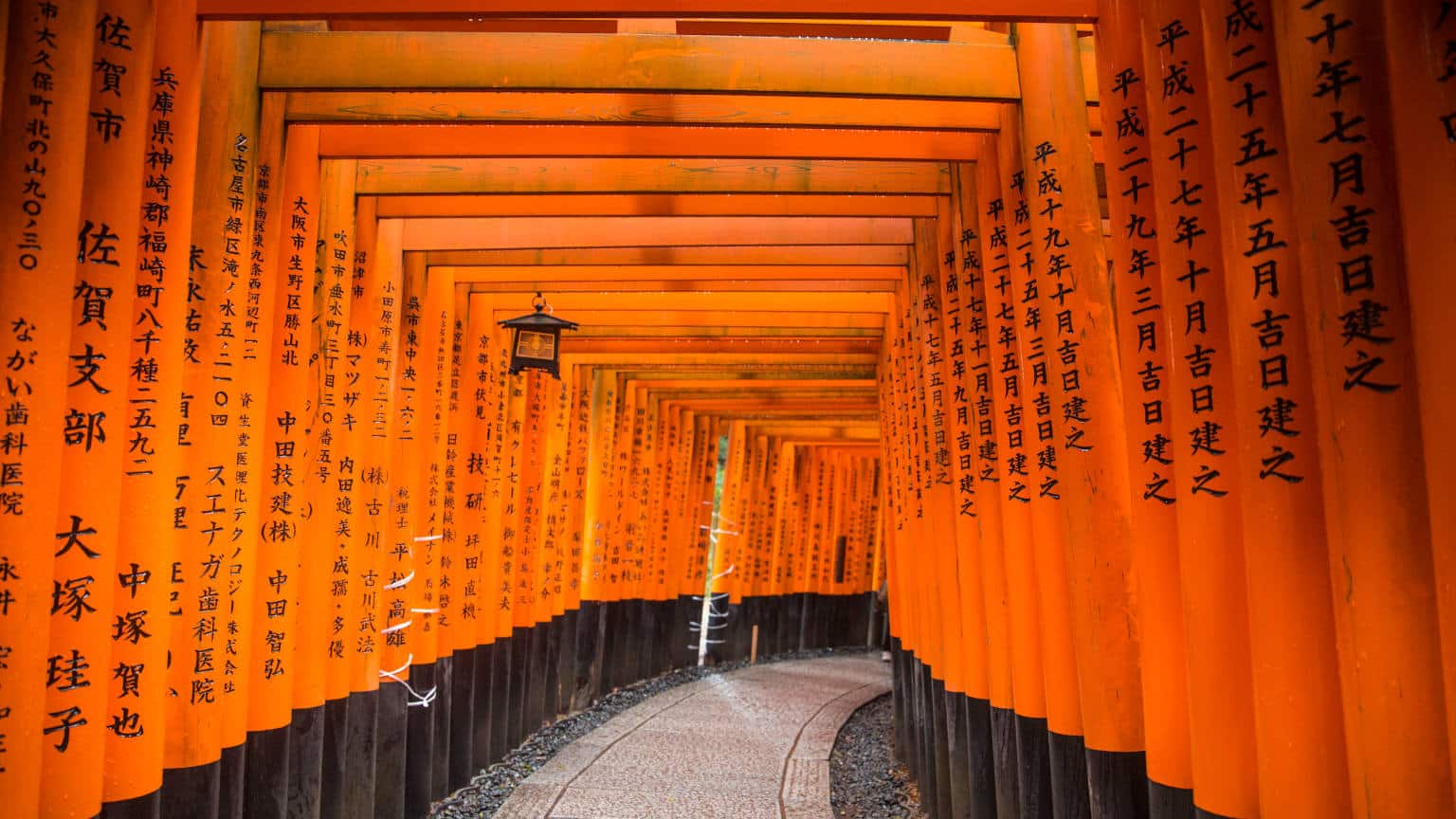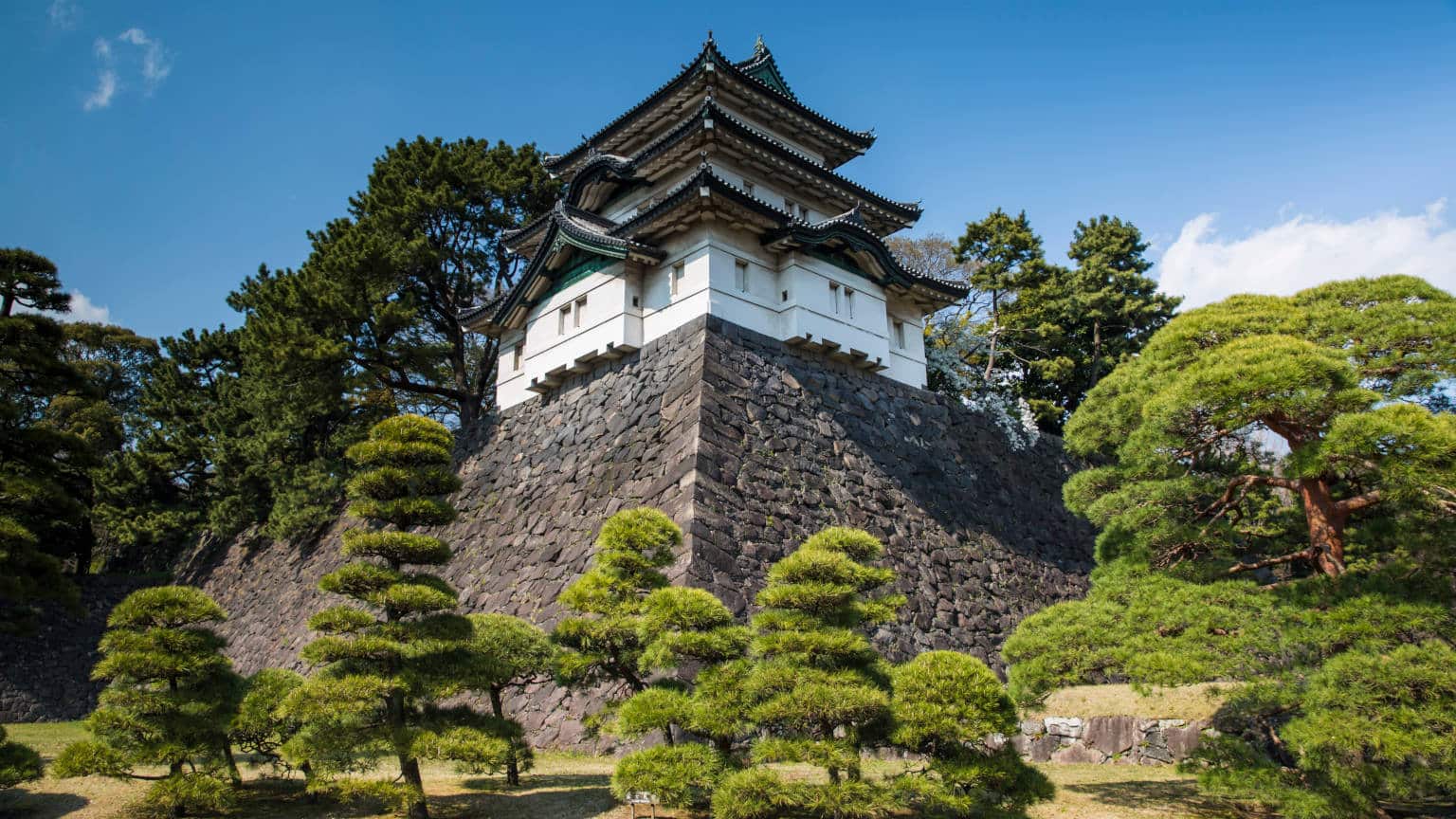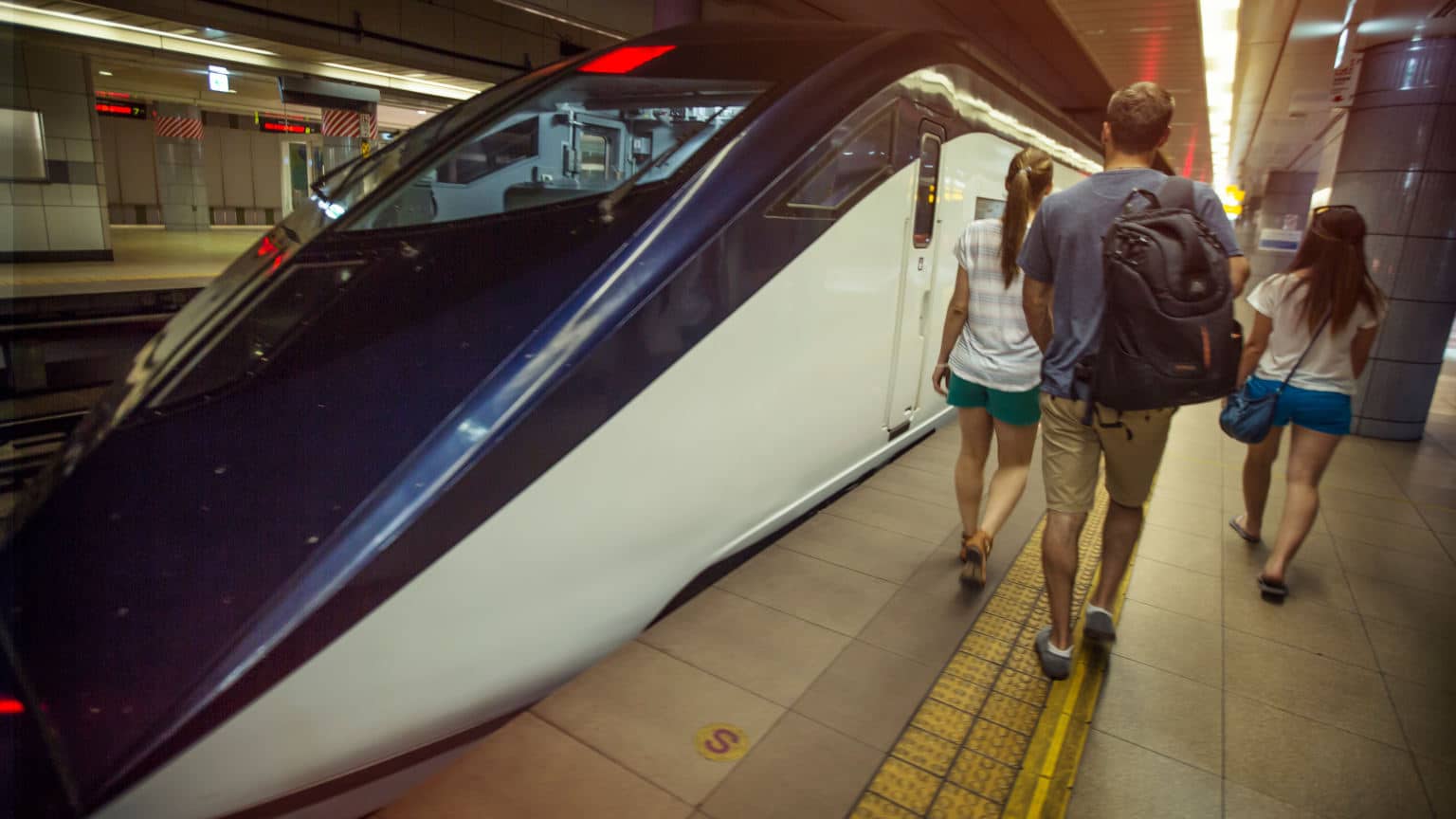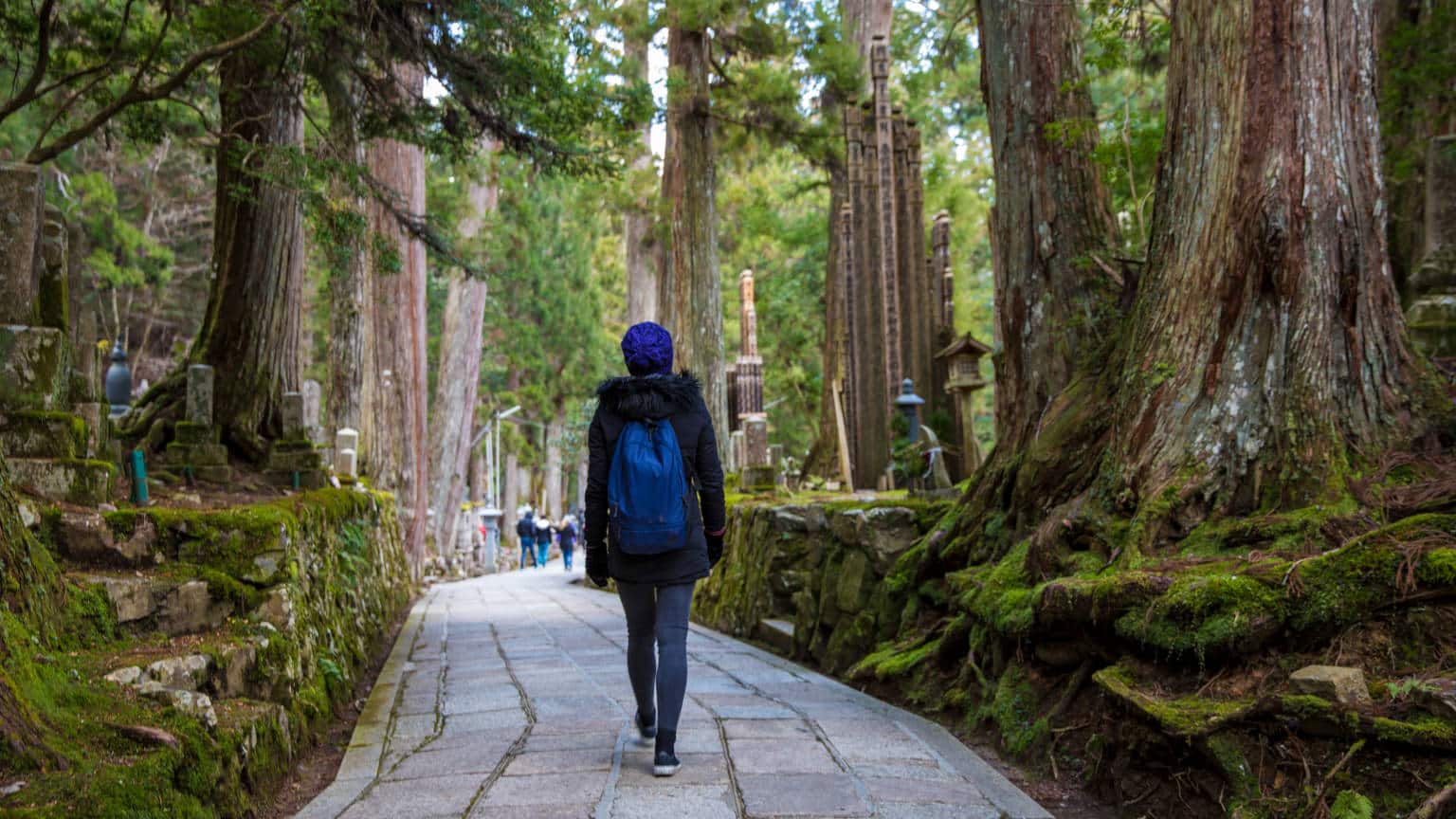Price
 $4131
$4131
This program has been canceled, but we are still offering a June 26th Japan program with a different itinerary. If you are interested in traveling to Japan using this itinerary, we can book travelers on trips with our partner tour operator, G Adventures. You can see available dates here. GEEO can provide a 5% discount (or the best available sale price). Please contact us if you are interested in booking a G Adventures tour to Japan.
Overview
Wander off the beaten path away from Japan’s big cities and popular sites with this 11-day tour that takes you to destinations that are often overlooked. Visit the treasured castle of Matsumoto and learn about Tokugawa culture, explore the quaint city of Hagi by bicycle, and settle in at a community homestay to truly immerse yourself in the local culture. Of course, there’s time before and after to explore Tokyo and Kyoto, making this trip a well-rounded glimpse into Japan’s past and present. Visit Japan with us, all while earning professional development credit with other educators.
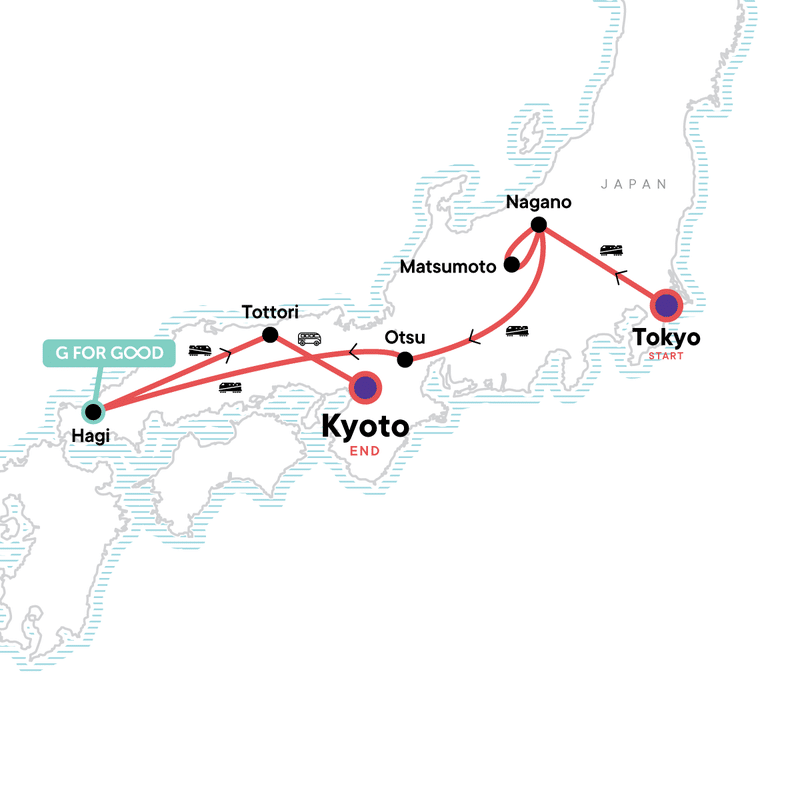
What's Included:
- Modern Tokyo walking tour
- Zenkoji Temple visit
- Jigokudani Monkey Park visit
- Matsumoto Castle visit
- Hagi Community Homestay
- Hagi cycling tour
- Tottori sand dunes visit
- Tottori fish market visit
- Fushimi Inari Taisha shrine visit
- Traditional Paper-Making Lesson
- Japan Rail (JR) pass (7 days)
- G Adventures tour leader throughout
- 3 breakfasts, 3 dinners – allow $450-665 USD for meals not included
- Hotels (8 nts), homestay (2 nts, multi-share).
- All transport between destinations and to/from included activities by Bus, bullet train, local train, bicycle, walking
What's Not Included:
- International air travel
- Incidentals
- Travel health and cancellation insurance
- Applicable visas
- Tips or gratuities
- Airport taxes
- Beverages
- Meals not mentioned in itinerary
- Optional tours and admissions
- Airport transfers
Itinerary Download PDF
Arrive in Tokyo at any time. We recommend arriving a day or two early to fully explore this huge city. This will also give you time to adjust to the time difference, overcome any jetlag, and avoid any disruption to your trip due to flight delays or cancellations. We can book extra hotel nights for you in Tokyo before the trip. Please note that check-in at the hotel is usually around 2:00-3:00 p.m. There are no planned activities until an intro meeting around 6:00 or 7:00 p.m., usually in the hotel lobby. Check for a sign or ask at the reception desk about the exact time and location of the group meeting. Please make every effort to arrive in time for this meeting. If you are delayed and will arrive late, please inform us. Your tour leader will then leave you a message at the front desk informing you of where and when to meet up tomorrow. After the meeting, you might choose to get dinner at a nearby restaurant with your traveling companions and your tour leader to further get to know one another.
Your tour leader will lead the group on a walking tour of eclectic modern Tokyo from the hub of Shinjuku to Shibuya through to Harajuku. The rest of the day is free for exploring more of the city.
Today we board a bullet train and journey to Nagano, located in the Japanese Alps and host city of the 1998 Winter Olympics. We will visit the Jigokudani Monkey Park, where wild snow monkeys can be seen bathing in the natural hot springs. The pool where most of the monkeys soak is man-made, fed by the hot springs. Along the walking paths up to the pools other monkeys tend to stop and watch visitors curiously. Approximate travel time: 3 hrs by bullet train
Today we travel by local train for a day trip to quaint Matsumoto where we will visit one of Japan's most treasured castles. Amazingly, the castle still retains its original wooden interior and stone exterior. Explore this castle where 16th-century Samurai once roamed before venturing out with the group to wander Matsumoto's ancient streets and or dine in a traditional storehouse. We then return to Nagano and visit the Buddhist temple of Zenkō-ji, one of the last remaining pilgrimage sites in Japan. Built in the 7th century, the city of Nagano was built around the already standing structure. Approximate travel time: 3-4 hrs round trip by local train
Today we travel to Otsu in Shiga prefecture, located on the banks of Lake Biwa, Japan's largest freshwater lake. Settle in and relax with a stroll around this picturesque lake before heading out to enjoy a delicious bowl of Ramen for dinner. Approximate travel time: 4.5 hrs by train
Grab a quick breakfast before a long travel day. Please note that before leaving Ōtsu, you'll need to prepare your day pack/overnight bag for a two-night stay in Hagi, as your main luggage will be sent on to Tottori. Remember to include comfortable clothing for a cycling excursion and two nights at the homestay. In the late afternoon, arrive in the quaint city of Hagi, a former castle town that boasts feudal architecture. Take part in a welcome ceremony with the local residents. Then get to know a local family at this G Adventures for Good-supported community homestay in Hagi, a farming, fishing, and historical heritage town. In recent years, due to the rapidly aging population and limited income opportunities in many of the rural areas of Japan, many community members have had to leave Hagi in order to make a living. Learn about local history and customs, and enjoy a home-cooked meal with your hosts. Approximate travel time: 6.5 hrs by train
Explore rural Hagi on a guided morning cycle. Enjoy the slow pace of life as you pedal past the city's Tokugawa era architecture, and cycle along the Japanese Sea. Afterward, you'll have free time to wander the narrow streets or opt to visit some of the beautiful old residences which are open to the public. In the late afternoon, return to your homestay and enjoy dinner with your host family.
This morning you'll bid farewell to your host family after enjoying breakfast together. Later, travel to Miho-misumi by train, taking in scenic views along the way. In Miho-misumi, learn the art of making "washi," a UNESCO-recognized traditional Japanese paper, and take home your handmade washi as a memento. Then we board a train again and end our day in the seaside town of Tottori. Approximate travel time: 6 hrs total by train
Located along the coast of the Sea of Japan, the Tottori Sand Dunes (or "Tottori Sakyu") were formed thousands of years ago when sand was washed away from a nearby river. This morning we'll walk amongst the dunes and opt to climb one to take in scenic views of the coastline. Afterward check out Tottori's harbor fish market, home to fresh seafood and some of Japan's best crab. Walk amongst the stalls and watch the locals in action. Opt to try a tasty dish in the market's restaurant section. In the late afternoon, travel to Kyoto, the traditional heart of Japan. Approximate travel time: 3 hrs by train
We will start off the day with a visit to the Fushimi Inari shrine, located just outside of Kyoto. Walk under the thousands of iconic torii gates (as seen in the film Memoirs of a Geisha) and enjoy the peaceful atmosphere. The shrine itself is at the base of the Inari mountain but includes many trails up to smaller shrines in the area. Kyoto is home to over 2,000 temples, including some of the most magnificent in the country, dating back centuries. Use free time to continue exploring, the options are endless – the city also boasts museums, castles, and traditional gardens – or opt to visit neighboring Nara or Osaka.
There are no planned activities today, so you may depart Kyoto at any time. We highly recommend extending your stay in Kyoto by at least one day or more to allow more time to explore this incredible city and take day trips to Osaka and Hiroshima (by Shinkansen). You may book post-trip accommodation at your hotel in Kyoto through us. Please note that check-out time from the hotel is usually mid-morning, but luggage storage services are available at the reception desk. Want more adventure? Book two or more GEEO programs in the same school year and receive a discount! GEEO will give you 10% off of the lesser value program(s) (up to 3 programs per year). If you would like to extend your time abroad but don't see another GEEO program that interests you, let us know. We can work with you to find a trip from our tour operator’s much larger catalog. Their tours are open to the general public and not designed specifically for educators, but we can still offer you and your travel companions a discounted educator price on any additional tours that you book.
Details
Frequently Asked Questions
Please click here to go to our general FAQ, which has essential information that applies to all of our programs.Resources to Learn & Teach about Japan
Visit our recommended reading page to see the list of books GEEO recommends reading before your program (this is not required reading). We also have lesson plans and Pinterest boards that may be useful for you as you learn about your destination and prepare to bring lessons back to your classroom.Terms and Conditions
It is very important for you to visit our Terms and Conditions page before signing up for this program.GEEO Program Confirmation Process
We require a minimum of 6 participants for most GEEO programs. We officially confirm that a program will run once at least 8 people have signed up, which provides a margin for individual cancellations. Nearly all GEEO programs ultimately meet this enrollment quota, and in the rare event that a program does not meet the minimum requirement and GEEO cancels the program, we will work with you to find a suitable alternative or provide a refund of your deposit if you prefer. We encourage you to sign up for any program that interests you, and we will notify the entire group once 6 people are booked and again once 8 people are booked. We always emphasize the importance of exercising caution when making non-refundable travel arrangements, especially given the unpredictable nature of travel. For example, we typically recommend booking flights with flexible change/cancellation policies.Cancellation Policy
All cancellations must be submitted to GEEO in written form by emailing your request for cancellation to travel@geeo.org. If you do not receive a confirmation that we have received your written cancellation request, please call us at 1-877-600-0105. Verbal cancellation requests will not be honored.- If you cancel 60 days or more prior to departure, all your program fee payments will be refunded besides your $350 deposit which is kept on file for future use
- If you cancel between 30 and 59 days prior to departure, you will receive a 50% refund and your deposit is kept on file for future use
- If you cancel within 30 days of departure, you will receive no refund, but your deposit is kept on file for future use
Trip Notes
- JAPAN RAIL PASS: Please note that only foreigners traveling as a tourist are able to use a Japan Rail Pass. If you are a Japanese citizen/resident or traveling on a student/business visa, please advise us at the time of booking, as you will not be able to take advantage of the Rail pass.
- TATTOOS: Tattoos are not common or widely accepted in Japan. There is no cause for concern, but do your best to cover your tattoos when possible and note that you may not be permitted to enter public spas or onsens (hot springs).
- LUGGAGE: Unlike some other GEEO programs, this trip uses public transportation and no private vehicles. There will be times when you will need to carry your luggage for up to 15-20 minutes between your hotels and bus/train stations. Please try to pack lightly.
- OVERNIGHT BAG: Please note that you’ll need to prepare an overnight bag for a two-night stay in Hagi, as your main luggage will be sent on to Tottori.
- LANGUAGE: Travel in Japan is easy, clean, fast and efficient, however, please be aware that English is still not widely spoken. However, a lot of patience, a sense of humor, and respect for the local culture goes a long way in any Japan and will greatly enrich your experience.
Group Leader Description
All GEEO/G Adventures group trips are accompanied by one of G Adventure's group leaders, which they refer to as Chief Experience Officers (CEO). The aim of the group leader is to take the hassle out of your travels and to help you have the best trip possible. They will provide information on the places you are traveling through, offer suggestions for things to do and see, recommend great local eating venues, and introduce you to our local friends. Our itineraries often have plenty of free time to explore on your own. While not being guides in the traditional sense, you can expect them to have a broad general knowledge of the countries visited on the trip, including historical, cultural, religious, and social aspects. We also use local guides where we think more specific knowledge will add to the enjoyment of the places we are visiting – we think it’s the best of both worlds.Fitness Level
This trip includes walking and light hiking. The heat of the summer can be draining, so make sure you stay hydrated and opt out of activities if you are exhausted.Single Travelers
Half of GEEO’s participants travel by themselves, so please don’t worry if you do not have a travel companion for your trip. Our program fee is for one traveler in double-occupancy accommodation, and GEEO can find you a roommate of the same gender if you do not have a travel companion. Most of our programs have a “My Own Room” option, also known as a “Single Supplement,” which is an extra fee that you can pay to have a room to yourself. You will only incur an additional charge if you specifically request a single room. To see the price for the “My Own Room” option, please find your program on our extra services page. If you want to room alone, please email travel@geeo.org to request a single room.Joining Instructions
Day 1 is an arrival day, and no activities have been planned. Upon arrival to the city on Day 1, or earlier if you have booked pre-accommodation with us, please make your way to the joining hotel. Please note: Check-in time will be in the afternoon. Once you arrive at the hotel, look for a note at reception from your tour leader. This note will give the details of your Welcome Meeting on Day 1, usually between 6:00 p.m. and 7:00 p.m., during which you will get a chance to meet your tour leader and other travelers, as well as learn more about how the tour will run. If you don’t see a note, please ask reception for details. If you miss the Welcome Meeting, your tour leader will leave a note at reception for you with any information you may need and with instructions for the next morning. Directions to Shinjuku Washington Hotel The nearest station is Shinjuku Station, south exit. Shinjuku Washington Hotel is directly connected by an underground passageway (serviced by JR, Tokyo Metro, Odakyu, Keio, and other railway lines) between 06:00 and 22:45 for comfortable access even in bad weather. It is an 8-min walk from Shinjuku Station, but the passageway can be hard to locate. Tocho-mae Station (Oedo subway line) is approximately 5 mins from the hotel on foot. From Narita International Airport:- By train: The JR Narita Express is a direct train between Narita Airport and Shinjuku Station. There is also the Keisei Skyliner, which takes approximately 40 minutes to travel from the airport to Keisei-Nippori Station, where you can transfer to the JR Yamanote Line and get off at JR Shinjuku Station (south exit) after about 8 minutes. See instructions above about walking from the station to the hotel. The train ticket fee is 2,770 JPY per person.
- By airport limousine bus: Take the bus from Terminal 1, bus stop #10. It is about 120-150 minutes to the entrance of the hotel. The fare is 3,200 JPY per person.
- By train: Take a train from Haneda Airport, Keikyu Airport Line, for approximately 23 minutes to Hamamatsucho Station. There, transfer to the JR Yamanote Line and get off at JR Shinjuku Station (south exit) after about 5 minutes. See instructions above about walking from the station to the hotel. The train ticket fee is 700 JPY per person.
- By airport limousine bus: Take the bus from Terminal 3, bus stop #4. It is about 60-80 minutes to the entrance of the hotel. The fare is 1,300 JPY per person. Bus tickets can be purchased at each terminal of Haneda Airport from vending machines near the bus stop.
Emergency Contacts
Should you need to contact G Adventures during a situation of dire need, it is best to first call their local G Adventures office. If for any reason you do not receive an immediate answer, please leave a detailed message and contact information so they may return your call and assist you as soon as possible. G Adventures Local Office (Japan) During office hours, Mon-Fri 9:30-18:00 Local Time From outside Japan: 1st contact +81 3-6823-2336 (2nd contact +81 80 6779 1851) From within Japan: 1st contact 03-6823-2336 (2nd contact +81 80 6779 1851) After office hours emergency number Primary phone: +81 80 6779 1851 (from within Japan: 080 6779 1851) If you are unable for any reason to contact the local office, please call the numbers listed below, which will connect you directly with the 24-hour Sales team, who will happily assist you. Toll-free, North America only: 1 888 800 4100 Calls from UK: 0344 272 0000 Calls from Germany: 0800 365 1000 Calls from Australia: 1300 796 618 Calls from New Zealand: 0800 333 307 Outside North America, Australia, New Zealand, Germany and the UK: +1 416 260 0999Packing List
Please read this article on GEEO’s blog for our staff’s suggestions on the best gear to pack for your upcoming travels. You must be prepared to carry your own bags and be comfortable carrying them up and down stairs, on and off transportation, and to hotels. As a rule, we try not to have to walk more than 15-20 minutes with your bags, which is why we recommend keeping the weight of your bags between 22-30 lb. Most travelers carry a backpack or rolling bag of small to medium size. No XXL bags please! A daypack is also essential for carrying everyday items. Space is limited on transportation, so there is a limit of one main piece of luggage per person plus a daypack per person. Health & Safety- N95/KN95 face masks (at least a few just in case there is an outbreak within your group)
- Hand sanitizer
- Rapid Covid tests/antigen tests (at least 3)
- Raincoat and/or umbrella (It is going to rain!)
- Personal clothing for hot weather – we recommend packing 8-9 days of outfits so you only have to do laundry once
- Light fleece (for flight over)
- Comfortable waterproof walking shoes
- Daypack
- Sunblock
- Sunglasses
- Sun hat
- Small towel and swimwear
- Watch or alarm clock
- Toiletries
- Camera
- First-aid kit, including: lip salve, aspirin, bandaids, anti-histamine, Dramamine, Imodium or similar tablets for mild cases of diarrhea, electrolyte powder, insect repellent, extra prescription drugs you may be taking
- Travel pillow
- Money belt
- Water bottle
- Phone/tablet for internet – most hotels have WiFi
- Chargers for electronics as well converters/adapters, if needed
- AirTags or Tile trackers
- Packing cubes
- Flip-flops/Sandals
- Earplugs
- Snacks – packing a few granola bars is a good idea; you can buy snacks when you get there too, so don’t go crazy here
- Ziplock bags for wet clothing
- Reading/writing material
- Hand sanitizer/baby wipes
- Passport (with photocopies)
- Any entry visas or vaccination certificates required
- Travel insurance ID card
- Flight itinerary/boarding pass(es)
- USD/EUR cash
- Credit/debit card
- G Adventures vouchers
- GEEO Classroom action plans for your group – this is sent a few days before departure
Laundry
Laundry services are offered by some of our hotels for a charge. You can also use a local laundromat, if necessary. We recommend packing enough clothes so you don't have to do laundry.Passports and Visas
All GEEO programs require that the participant have a valid passport. Please see our general FAQ for information on obtaining a passport. As with all of our trips, we try to provide the most accurate information we can, but governments sometimes change visa rules. It is your responsibility to double check the information we provide below by searching here. U.S. citizens do not need a visa to travel to Japan. Non-American participants should check with their government or nearest Japanese Embassy to find out if they need a visa.Money Exchange
The local currency is Japan is the yen (¥ JPY). As currency exchange rates fluctuate, we ask that you refer to the following website for daily exchange rates: www.xe.com. 7-Eleven Convenience stores are ubiquitous throughout Japan, and nearly every one has an ATM where you can withdraw the local currency. We do, however, recommend that you bring at least $200 USD in cash for emergency use or in case you have trouble with the ATMs. Major credit cards are accepted in most shops, but you may be charged an international transaction fee; ask your financial institution about their international fees. Please note that if you are carrying U.S. dollars, the bills should be in good condition (i.e., not torn, wrinkled, or marked on in any way) and dated recently.Tipping
Tipping is not practiced in Japan. Leaving money at restaurants, in taxis, etc. will simply cause confusion! However, at the end of each trip, if you felt your G Adventures tour leader did an outstanding job, a tip would be appreciated. The amount is entirely your personal preference, but as a guideline, $5 USD or around ¥725 JPY per person per day would be appropriate.Vaccinations
GEEO cannot provide any medical advice, so it is very important to consult your doctor or a travel clinic about which vaccinations you will need for your trip. We recommend contacting Passport Health (http://www.passporthealthusa.com/), which has travel clinics located throughout the United States. You can also check the CDC's recommended vaccinations for your destination. Please take this seriously!Flights
We find the best prices for flights are often available around 90 days before departure, but of course this varies greatly from route to route and year to year. You should wait until this trip is confirmed before you book non-refundable flights. GEEO and G Adventures bear no responsibility for any flights purchased before the trip is confirmed. This program begins in Tokyo and ends in Kyoto. Please double-check our itinerary for the date by which you must arrive in Tokyo. You may want to arrive in Tokyo one or more days early in case you have flight disruptions. If you have never been to Tokyo before, there is a lot to see! You can arrive at any time you choose, but try to make it in time for our 6:00 p.m. Welcome Meeting on Day 1. You can depart from Kyoto any time on the final day of the program, or stay later to see more of the city. The two nearest airports to Kyoto are Kansai Airport (KIX) and Itami Airport (ITM). You can also transfer back to Tokyo on the bullet train or book an affordable one-way flight from KIX/ITM to NRT/HND.Plugs and Converters
There are two components to provide external power to your device: adapters and transformers (also called electrical converters). The adapter is for your device's plug, adapting the prongs on a standard U.S. two- to three-pronged power cord to fit the local outlets. The transformer/converter changes the local voltage to the voltage used in the U.S. Japan uses Type A plugs, which is the same plug design used in the United States. However, the outlets only accommodate two-pronged plugs, so if you have a device with a grounding plug, you will need a 3-prong to 2-prong plug adapter. Voltage in Japan is 100 Volts. U.S. outlets are 120V. Most new devices (phones and laptops) can handle the different voltage rates, but some devices only work on the U.S. standard of 120V. Check your device to see what voltage range it handles. Most transformer blocks will have an “Input” line that defines its voltage capacity. For example, “Input: 100-240V” means that it will work on voltages from 100V to 240V. If your transformer can’t handle the different voltage, you’ll need to purchase a voltage converter. You can find world regional voltage converters power packs at various vendors.Expectations
Before you decide to travel with GEEO, it is important that you read all of the information about the program you are considering. Remember, our programs are quite adventurous.- The purpose of the accommodation is to provide a safe, well-located place for you to sleep. We use simple hotels to keep these trips as inexpensive as possible.
- We use a mix of transportation that gets our guests from location to location safely. Sometimes you will have full days of transportation as our trips tend to cover a lot of ground. The transportation will often be an adventure in itself.
- You must be able to easily carry or roll your luggage, so do not over-pack.
- This trip occurs in locations where it is very hot during the day. Please make sure you have thoroughly read the itinerary and can handle the group activities, which sometimes include day hikes with your daypacks.
- We recommend always carrying snacks with you. Meals can sometimes be far apart.
- Please make sure you understand the role of your tour leader on this trip as they are not the traditional “guide” you may be expecting. While our trips are educational, they aren’t study/lecture trips. We want you to learn through exploring, and much of your experience will be based on how active you choose to be in acquiring knowledge and interacting with locals.

